| About Hubei | Culture & Arts | ||
| Attractions | Routes | ||
| Dining | Shopping | ||
| Hotels | Transportation | ||
| Entertainment | Travel agencies |
Jingshan to attract Wuhan tourists
Storytelling queen
For the love of Wuhan
Dangyang to promote tourism


Xiangyang
(chinatravel.com, travelchinaguide.com, wikipedia)
Updated: 2011-11-21
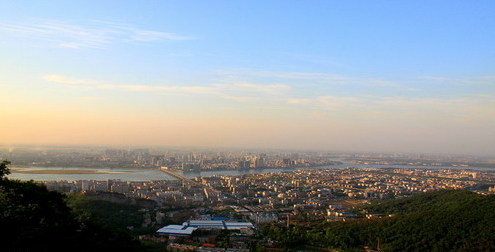 |
| A bird's eye view of Xiangyang (photo from nipic.com) |
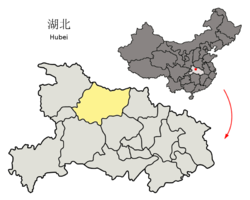
Xiangyang city lies in the northwest of Hubei province and middle reaches of the Hanshui River. Xiangyang, which is a transition belt from the second step of the staircase to the third step of the staircase in China’s topography, is in an irregular square shape. The west of Xiangyang is a serried mountainous area of Jingshan Mountain Ranges and Wudang Mountain Ranges, while the east is a foothills area surrounded by Dahong Mountain and Tongbo Mountain. The north of Xiangyang, called “Hillock Area in Northern Hubei”, is scattered over Wudang Mountain Ranges and Tongbai Mointain. The area of Hanshui River and the south are more open fluvial plain.
Xiangyang city occupies an important status in transportation and had known for its waterways in the south and roads in the north and, had been the seven provinces thoroughfares from ancient times. According to the local chronicle, King Xuan of the Zhou Dynasty granted Zhongshan to govern Fan, formed Fan State, which was built around 2,800 years ago. Xiangyang was called Xiangguo in old days, and Xiangyang county was established at the beginning of Han Dynasty. Xiangfan city merges with Xiangyang District in 1983. It has an area of 26,563 square kilometers, including 32.6 square kilometers of urban area, and a population of 6 million, including 5.43 million of urban population.
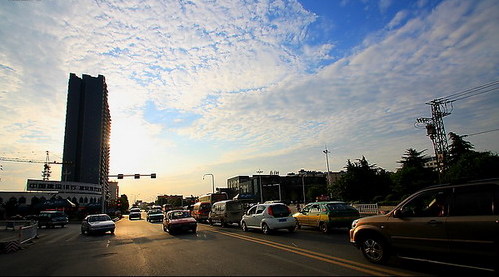 |
|
Xiangyang city occupies an important status in transportation and had known for its waterways in the south and roads in the north. (photo from nipic.com) |
In 1978, Xiangyang became a national-level historical and cultural city approved by the State Council. Within Xiangyang’s jurisdiction we have ascertained more than 200 historical relics from different periods, and some are highest-level in the world. Xiangyang is abundant with revolutionary monuments including 41 revolutionary sites under protection now. Here is the Holy Land where the revolutionary martyrs bled and died for a righteous cause; here is the Holy Land where the revolutionary martyrs bled and died for lofty ideas.
The terrain of Xiangyang is higher in the west and lower in the east. The western part is made up of mountains and the eastern is low mountains and hills. The Han River flow eastward through the city and divides it into northern and southern city areas.
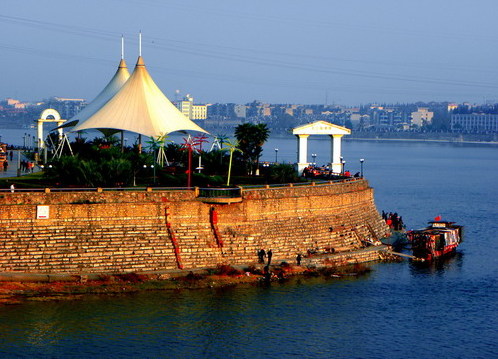 |
|
The terrain of Xiangyang is higher in the west and lower in the east. (photo from nipic.com) |
Xiangyang enjoys a subtropical monsoon climate with annual average temperature of about 16℃ (61℉). The temperature goes up quickly in spring, and rainstorms may sometimes attack this area in summer. Continued cloudy and rainy weather usually happens in autumn.
Xiangyang is an area where 29 different nationalities, including Hui, Tu, Meng, Manchu, Zhuang, Miao, Han people, living together. Xiangyang administers 5 counties: Xiangyang county, Xuancheng county, Nanzhang county, Baokuang county, Guicheng county and one city: Zaoyang city. It also governs two cities of county level: Suizhou city and Laohekou city.
Today, the existing city wall of ancient Xiangyang city is all that remains of the Ming Dynasty. Its outer is laid by pieces of large bricks and the inner is filled by the rammed earth. The north side faces Han River and the others are encompassed by moat whose depth is 6.6 to 9.9 feet and the widest point measures 273 yards. There is only one city gate left – the north gate "Suo Yue" which means the lock and the key, signifying the gate's military importance. Though the rest of the city gates were destroyed, the ancient city layout and defense system can still be easily recognized.
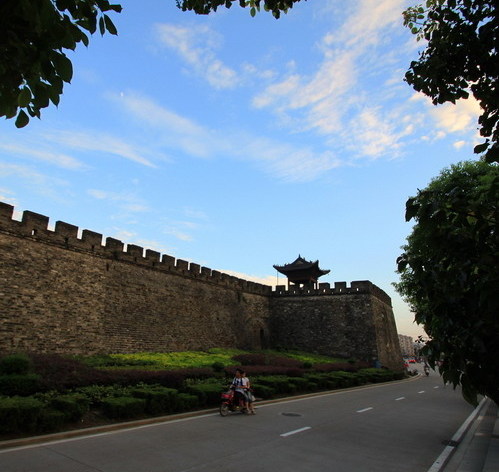 |
|
Today, the existing city wall of ancient Xiangyang city is all that remains of the Ming Dynasty. (photo from nipic.com) |
Tourist Tips:
1. Xiangyang Airport is 18 kilometers (11 miles) northeast of Xiangyang downtown, operating flights to some major cities, including Beijing, Shanghai, Wenzhou, Xiamen, Xian and Chongqing. Wuhan can be reached within five or six hours from Xiangyang by train and visitors can make a round trip in the same day by train or by bus between them.
2. If visitors plan to stay at Xiangyang a little longer, the Shennongjia Forest Zone is suggested to their tourist schedule. The scenic spot is 274 kilometers (170 miles) from Xiangyang, about 4 hours' ride.